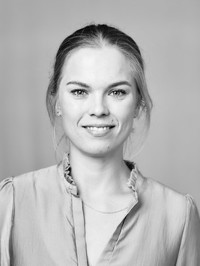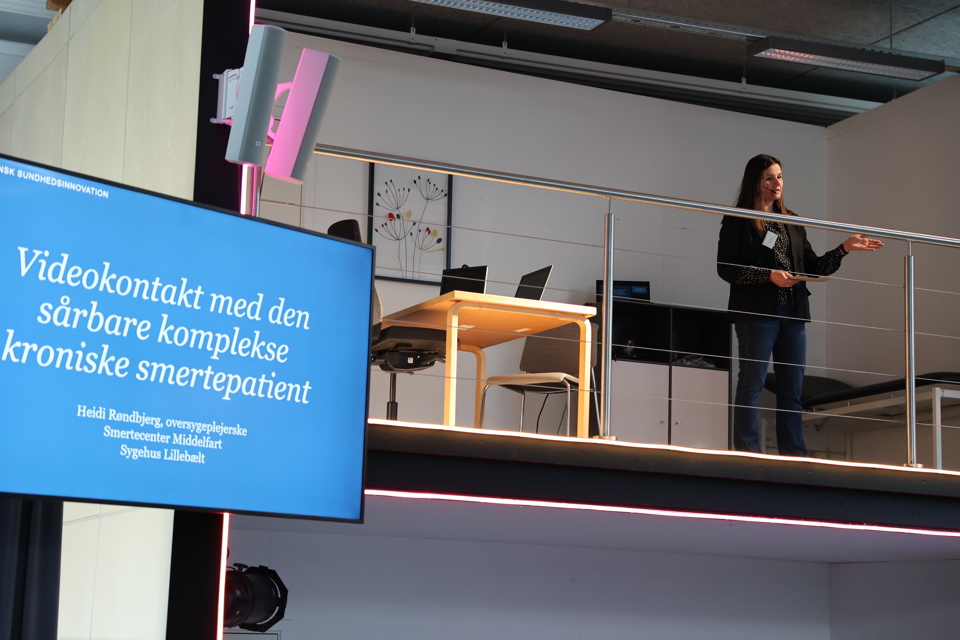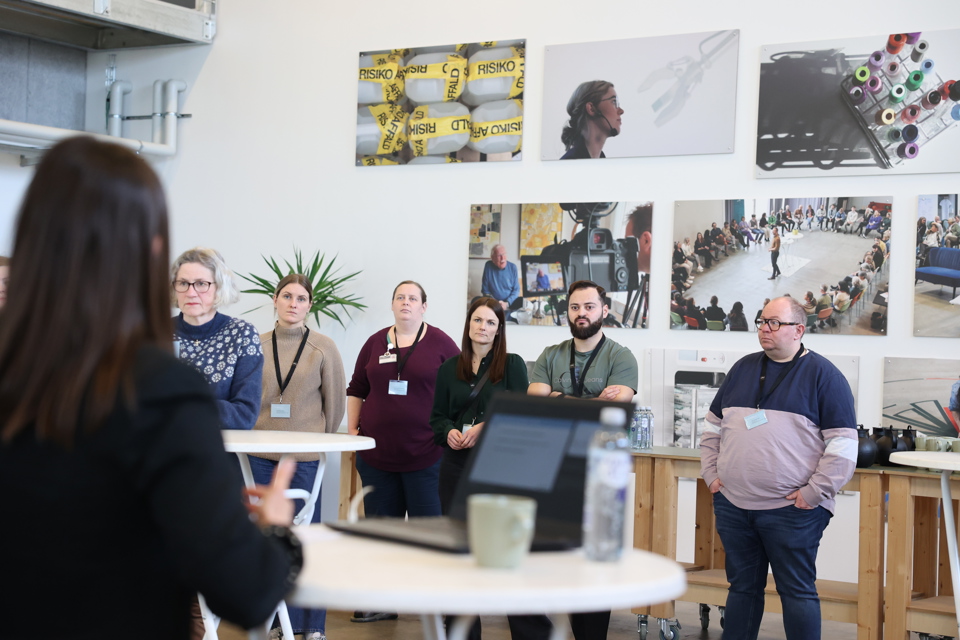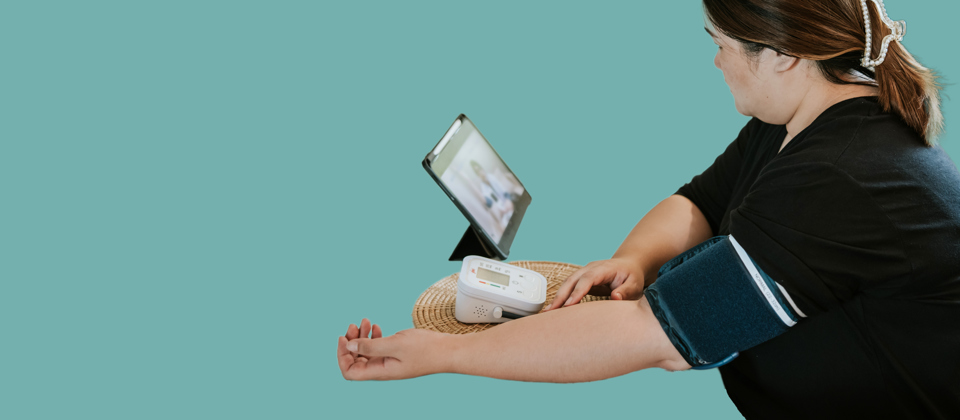Summary: Video contact for vulnerable patient groups – theme day, 5 March 2025
Video contact has become an integral part of the healthcare service’s interaction with patients and their relatives. In the future, digital opportunities will increasingly become a natural part of daily practice.
More than 70 participants joined on 5 March 2025, when the Health Innovation Centre of Southern Denmark hosted the third theme day on virtual contacts between patients, relatives and hospitals.
The theme day was the first of the year and focused on the use of video when engaging with particularly vulnerable patient groups.
Video consultations have now become an embedded part of the healthcare service and are used in many different ways. For vulnerable patient groups, video can be a valuable solution that enhances accessibility and provides comfort.
Perspectives on vulnerability in healthcare
Professor in vulnerability and Nurse, Dorthe Nielsen opened the day with a presentation on the central focus of the theme day: vulnerability. She illuminated the various perspectives on vulnerability that are evident within the healthcare service and spoke about how culture influences our understanding of and approach to vulnerable patients.
Vulnerability consists of many different factors, including social and cultural elements, and is inherent in everyone. However, vulnerability is context-dependent and arises in particular situations.
As Dorthe Nielsen says:
- We must be skilled at uncovering vulnerable situations, not vulnerable people.
She also emphasised the importance of the way we speak to and about patients and relatives. Attention should be paid to the impact of narratives, as they can ultimately lead to stigmatising behaviours. It takes time to be humane enough to understand the images and assumptions that the patient may hold.
In conclusion, Dorthe issued a call to action:
- We must focus on equality, which is achieved in both prevention and treatment by recognising that people are different, have different needs and resources, and experience vulnerability in different ways. Therefore, they also require different support and services.
See the presentation on Perspectives on Vulnerability in Healthcare.
Sharing knowledge is paramount
The aim of the theme day was to promote the sharing of both knowledge and experiences – including the successful and the more challenging aspects.
On the day, three different departments were invited to present their concrete experiences with using video contact in their interactions with various groups of vulnerable patients:
- Video interpretation, presented by Dorthe Nielsen from the Immigrant Medicine Department at Odense University Hospital
- Video contact with the vulnerable complex chronic pain patient, presented by Heidi Røndbjerg and Tram Nguyen Le Fevre from the Pain Centre Middelfart at Hospital Lillebælt.
- Video contact in the palliative care initiative for cancer patients and their relatives – presented by Eithne Hayes Bauer from the Medical Research Unit at Hospital of Southern Jutland and Lene Munk from the Palliative Team on Funen. (See presentation.)
Each of the three cases was presented with a brief 5-minute pitch, followed by a 20-minute session during which the participants engaged in group dialogue.
They asked questions of the speakers and discussed how the experiences could be applied in their own departments.
The Fusion Clinic – a relationship-based treatment for diabetes patients with concurrent mental illness
To conclude the theme day, Nurse Mette Wallbohm Olsen, Centre Manager for Steno Diabetes Centre Zealand and Head of the Fusion Clinic, took the floor.
Her presentation focused on the Fusion Clinic, a part of Slagelse Psychiatric Hospital, which caters to patients suffering from both diabetes and mental disorders.
As Mette herself described:
– These are the people who are truly down and struggling. The patients are interesting because they face several challenges at the same time and must fit into a system that does not suit them.
Before the establishment of the Fusion Clinic, the two conditions often exacerbated each other for this target group, as there was a lack of a holistic view of the patient. The symptoms of the two illnesses overlap, making it difficult for healthcare staff to determine where adjustments should be made. With the Fusion Clinic, which is now operational, a single, integrated treatment is offered.
If a patient has an appointment at the clinic but calls because they are unable to attend in person, they are offered the opportunity to conduct the consultation virtually.
However, Mette Wallbohm stresses that there is a desire for the majority of visits to be physical, as these provide the greatest value. Yet, given the many challenges faced by this patient group, virtual contact can be a useful tool on particularly difficult days.
Kontakt

Stephanie Anker Gents
Projektleder, cand.scient.san
Brugercentreret Innovation
24 65 50 77 sag@rsyd.dk



